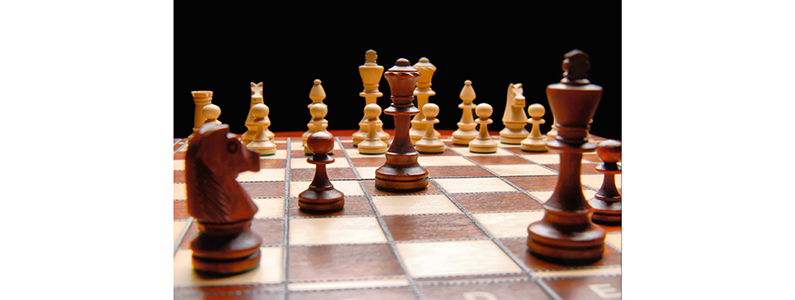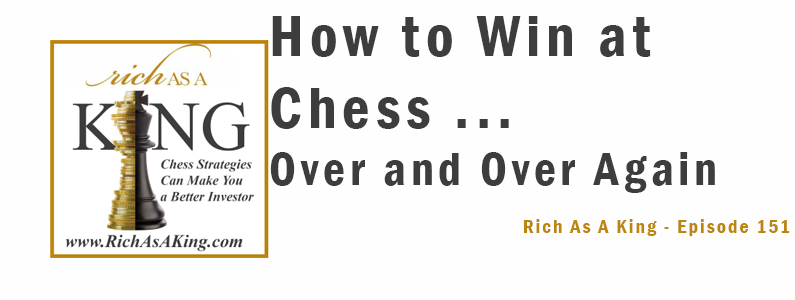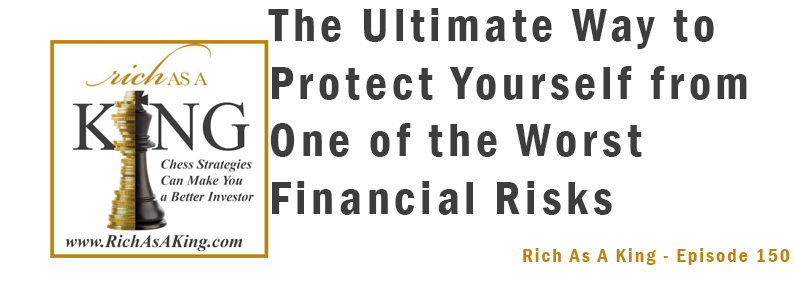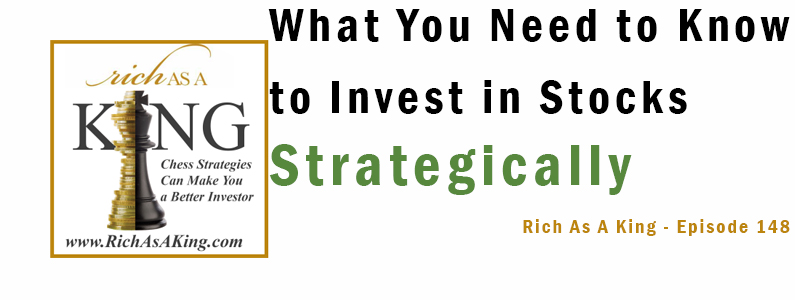
by Doug Goldstein CFP® | Feb 27, 2018 | Chess Strategies, Decision Making |
While chess pundits may think attack is the best form of defense, is following an attack strategy the best way to protect your investments? Attack strategy on the chessboard To answer this question, let’s take a look at the famous 1851 “Immortal Game,” when Adolf Anderssen defeated Lionel Kieseritzky using a particularly aggressive strategy. Analysts of the game point out that almost every one of Anderssen’s moves either directly struck his opponent or prepared Anderssen for a later attack. His audacious sacrifices of his rooks, a bishop, and eventually his queen, set him up to checkmate Kieseritzky with just three minor pieces. But how far can you take this aggressive “attacking” approach in chess or investing? Not as far as you might like. While strong attacking moves can advance your position, they need to be tempered with serious thought. Chess enthusiasts refer to Mikhail Tal’s games. Tal is known for his combinations of daring sacrifices and tactical improvisations. Even though Tal’s aggressive play won him the nickname of “the magician from Riga,” he was only able to hold onto the title of world champion for one year. While aggressive techniques may win in the short term, can they sustain prolonged success? Think clearly In chess and investing, while it pays to focus on winning and to ignore the negative influences around you, you need to strike a balance between aggression and caution. Just as in today’s defensive realm of grandmaster chess it’s not clear that Tal’s approach would work well, so too in investments. Someone may tell you about a deal that caused him to profit, but investing history... Click for more

by Doug Goldstein CFP® | Feb 13, 2018 | Chess Strategies, Financial Plan |
What does the expression “active investor” mean to you? Does it make you think of someone who is constantly buying or selling investments, and moving his money around from one place to another in hopes of generating a profit? Here’s news: you can be an “active investor” even without actively buying/selling. Churning your portfolio will do you little good, and could actually create negative results. Simply buying or selling an asset in order to “do something” – as opposed to following your financial plan – is a serious financial mistake. Active investing means making sure to put your funds in the most productive places you can find… even parking them there for the long term. Active investing is making sure your money works for you. Active pieces on the chessboard Being an active investor is similar to being an active chess player. How is that? To take an analogy from the world of chess, consider the 1993 game when Susan Polgar played Vasily Smyslov. Here’s how Susan describes her win against him in Rich As A King: “When I played Smyslov in 1993 in Vienna, I placed my white bishop near the corner in square g2, where it stayed for 20 moves. Without constantly adjusting it, nor trying to find a new idea, I just left this well-placed bishop in an ideal spot. The volatility on the board certainly made me reconsider my strategy, but I knew that having a solid asset in the right square would, in the long run, help me to succeed. And when I finally deployed this powerful piece, I was able to chip away... Click for more

by Douglas Goldstein | Nov 28, 2017 | Chess Strategies, Podcasts, Strategic Thinking |
What helped Susan Polgar win at chess over and over again? She began winning chess at age four, and became the first woman in chess history to achieve the title of grandmaster. Find out what strategy she used to win at chess, and how you can use the same strategy to stay ahead even when the market knocks you... Click for more

by Douglas Goldstein | Nov 14, 2017 | Chess Strategies, Financial Strategies, Podcasts |
What is one of the worst financial risks? How about losing money in high tax payments. You can prevent this from happening by putting some of your earnings into a tax-deferred investment. Find out how this helps by looking at the knight on the chessboard, which performs best when it finds a square in enemy territory that can’t be touched by your opponent’s... Click for more

by Doug Goldstein CFP® | Oct 24, 2017 | Chess Strategies, Strategic Thinking |
If you want to boost your financial returns, try applying one of my favorite chess tactics – the chess fork – to managing your money. What is a chess fork, and how does it work? When a chess player forks his opponent, he moves his piece to a strategic square, threatening two of his opponent’s pieces at the same time. Since his opponent cannot save both threatened pieces simultaneously, the chess fork gives its player a distinct advantage. A chess fork can help you achieve two goals through a single action, as illustrated by the expression: “Kill two birds with one stone.” In finance, this can be compared to enhancing one of your assets so that it fulfills two or more of your financial goals. In this way, you receive multiple benefits from a single investment. Enhance your retirement funds One great way to make your assets work double-time for you is to put money into an IRA or a 401(k). These retirement plans are similar to the concept of a using a fork in chess, since a single action reaps multiple benefits: You get a current tax deduction – the money you put into the retirement plan lowers the amount of tax you pay today. Your money grows tax deferred – if you put money into an IRA or 401(k), you are only taxed on the profits when you withdraw any funds. Then, you are only taxed on the amount that you have withdrawn, not what remains inside the account. By leaving your money to grow untaxed, you will gain more. If you have a 401(k) plan from... Click for more

by Douglas Goldstein | Oct 17, 2017 | Chess Strategies, Decision Making, Podcasts |
To invest in stocks, you need to know how to choose the ones that are best for you. In this financial podcast, apply Susan’s way of choosing which chess pieces to move on the board to determine which stocks to buy. Once you’ve chosen your stocks, decide how involved you want to be with managing your investments and take a look at the different options that are available to... Click for more










